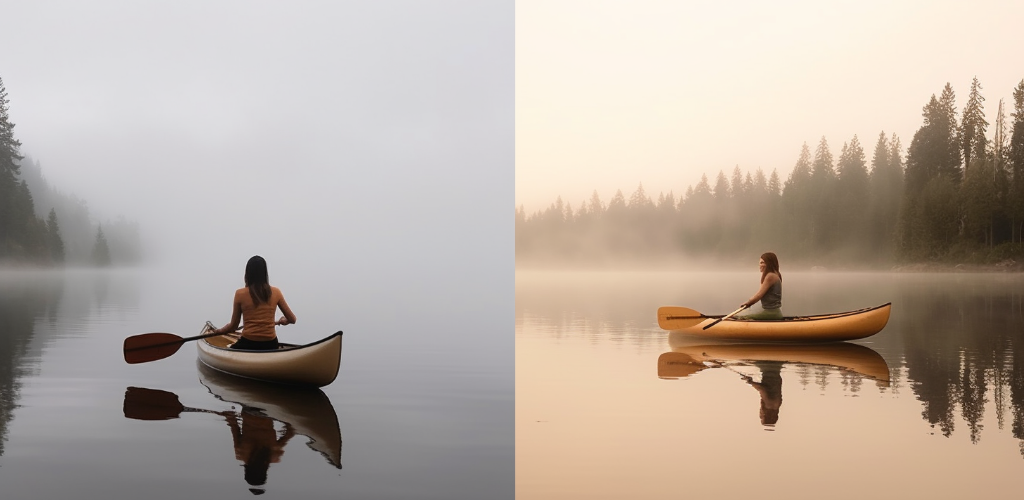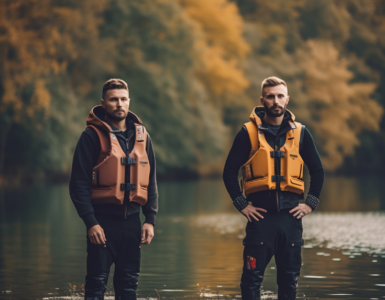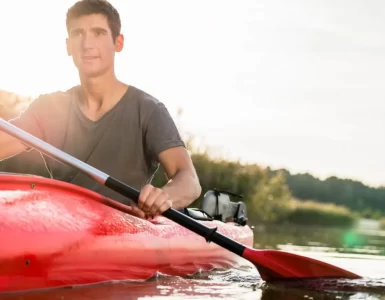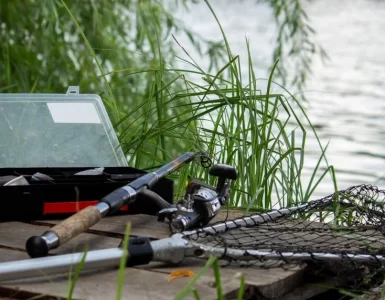Water sports are a thrilling way to engage with nature, test your fitness, and have some fun. Among the myriad of options available, canoeing and kayaking stand out as favorites for many. However, despite their popularity, there is often some confusion about what sets these two activities apart. Are they just different names for the same thing? Or do they offer unique experiences? Let’s set sail on a journey of discovery and uncover the true differences between canoeing and kayaking.
Overview of Canoeing
Canoeing, a sport steeped in history, has its roots tracing back to indigenous populations who used these versatile boats for transportation and hunting. Over time, the simple designs evolved, but the essence of canoeing has remained the same.
Typically, a canoe is an open vessel, with both ends pointed. It’s designed to accommodate one or two paddlers who either kneel or sit on a bench-like seat. The paddler uses a single-bladed paddle to navigate the waters, alternating sides to steer and move forward. The open design and single-bladed paddle are key features that distinguish canoeing from its cousin, kayaking.
Overview of Kayaking
On the other hand, kayaking, with origins in the Arctic regions, was initially used by the Inuit people for hunting and fishing. Today, it’s a popular water sport enjoyed worldwide.
A kayak is a closed vessel, with a hole in the center for the paddler to sit in. Unlike a canoe, the paddler sits on the bottom of the boat with their legs stretched out in front. The primary tool for propulsion in kayaking is a double-bladed paddle. This allows the paddler to alternate strokes on either side without having to switch hands, providing more stability and speed. This closed design and double-bladed paddle technique are what differentiate kayaking from canoeing.
Diving Deep into the Differences
Now that we’ve covered the basics, let’s dive into the differences between canoeing and kayaking. The key areas where these sports diverge are primarily in their design and paddling techniques. Sounds interesting, right? Let’s get started.
Design
One of the primary differences between a canoe and a kayak lies in their design. Ever noticed how different they look? That’s because a canoe is generally an open vessel, allowing you to sit or kneel inside, while a kayak is a closed vessel, where you sit at the bottom with your legs in front. But what impact does this have on their performance and suitability?
Well, the open design of a canoe makes it more suitable for calm waters and allows for more cargo, making it a great choice for leisurely trips or camping adventures. On the other hand, the enclosed design of a kayak makes it ideal for fast-moving waters and provides better protection from water splashes. The design also offers more control and stability, especially in rough waters – pretty neat, isn’t it?
Paddling Technique
Let’s move on to another interesting difference – the paddling techniques. Can you guess how they might differ?
In canoeing, you typically use a single-bladed paddle, and you paddle on one side of the canoe at a time. This requires a special technique to keep the canoe straight. In contrast, kayaking uses a double-bladed paddle, allowing you to paddle alternately on both sides, which aids in maintaining a straight path easily. This difference in paddling techniques significantly influences maneuverability in the water. Kayaking allows for quicker turns and more agility, whereas canoeing offers a more relaxed and rhythmic experience.
Equipment Used
Aside from the vessels themselves, the equipment used in canoeing and kayaking also differs. But how, you might ask? Let’s find out.
Both sports require the use of life jackets and helmets for safety. However, in kayaking, you might also need to use a spray skirt, a piece of equipment that prevents water from entering the kayak. In canoeing, on the other hand, such equipment is not typically required due to the open design of the canoe. This highlights how each sport has its unique requirements based on its design and the nature of the activity. Fascinating, isn’t it?
Safety Measures
When it comes to water sports like canoeing and kayaking, safety should always be your top priority. So, what are the safety measures followed in these activities?
Both sports require the use of personal flotation devices or life jackets. These are not just for beginners, mind you. Even the most experienced paddlers know that you can never predict when you might capsize. It’s always better to be safe than sorry, right?
Moreover, helmets are also commonly used in both sports, especially when navigating through rough waters. This helps protect the paddler’s head from any potential knocks or bumps.
However, there are some safety measures that are unique to each sport. For instance, kayakers often use spray skirts, which are designed to prevent water from entering the kayak. Canoeists, on the other hand, usually don’t use spray skirts because their vessels are designed to handle a bit of water inside.
Fitness Level and Skills Required
Next, let’s talk about the fitness level and skills required for canoeing and kayaking. Is one more physically demanding than the other? Let’s find out.
Both canoeing and kayaking require a good level of physical fitness. They involve a lot of upper body strength, as well as core strength for balance and stability. However, the specific muscles used can vary between the two sports. Kayaking tends to engage the shoulders and upper arms more, while canoeing can involve more of the chest and lower arms.
As for skills, both sports require the ability to swim, knowledge of water safety, and the ability to handle the vessel. However, kayaking often requires more technical skills, such as the ability to roll the kayak upright if it capsizes.
It’s also worth noting that the level of fitness and skill required can vary greatly depending on the type of water body. For instance, paddling in calm, flat water will be less demanding than navigating through fast-moving rapids.
| Canoeing | Kayaking | |
|---|---|---|
| Safety Measures | Life jackets, helmets | Life jackets, helmets, spray skirts |
| Fitness Level Required | Good upper body and core strength | Good upper body and core strength, more shoulder and upper arm engagement |
| Skills Required | Ability to swim, water safety knowledge, vessel handling | Ability to swim, water safety knowledge, vessel handling, ability to roll kayak |
| Effect of Water Body Type | Varies; calm waters less demanding than rapids | Varies; calm waters less demanding than rapids |
Picking the Right Sport for You
Now that we’ve shed some light on the differences between canoeing and kayaking, it’s time to make a decision. Which one is right for you? Well, it all comes down to your personal preferences, fitness level, and the type of water body you have access to.
If you enjoy a laid-back, leisurely pace and love fishing or bird-watching, canoeing might be your cup of tea. It’s also a great choice for family outings as canoes offer more space.
On the other hand, if you’re looking for a more intense workout and enjoy the thrill of braving the rapids, kayaking could be your perfect match. It’s also more suitable for sea adventures.
- Adventure Sports Center International – Located in the United States, it offers both canoeing and kayaking experiences.
- Nantahala Outdoor Center – This is one of the premier centers for water sports in the United States, offering both activities.
- Mad Goats – Based in Norway, they provide urban kayaking in the heart of Oslo.
- Go Canoeing – Located in the United Kingdom, it provides a wide range of canoeing experiences.
- Adventure Ganga River – Based in India, they offer both canoeing and kayaking experiences on the Ganges.
The Thrill of Water Sports
Water sports, whether it’s canoeing or kayaking, offer an invigorating way to explore the great outdoors. From the tranquil lakes to the tumultuous sea waves, every journey on the water is a unique experience. So why not give both canoeing and kayaking a try? After all, variety is the spice of life!
And if you’re interested, there are numerous global events related to canoeing and kayaking that you might be interested in attending or following. These events not only offer an opportunity to see the sports at their highest level but also to connect with a community of enthusiasts.
- ICF Canoe Sprint World Championships – An annual event where athletes from around the world compete in canoe and kayak races.
- Yukon River Quest – The world’s longest annual canoe and kayak race, held in Canada.
- Devizes to Westminster International Canoe Race – A long-distance canoe race held in the United Kingdom.
- Australian Canoeing National Championships – A premier event in Australia showcasing the best in canoeing and kayaking.
- Freestyle Kayaking World Championships – An event where kayakers showcase their best freestyle moves.




